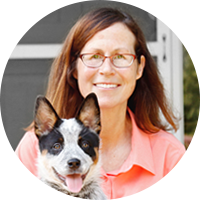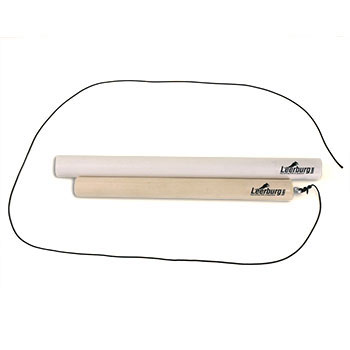May 02, 2011
Is it better to say no or come and then give a correction via e-collar when he does not listen or it it better to not say anything and just correct him with the e-collar?
Full Question:
Dear Cindy,My question is regarding avoidance corrections. I have a 2.5 year old cattle dog mix that I have just adopted. I am constantly around horses and my dog will be as well. When the horses are not really moving the dog leaves them alone but if they start running around his herding drive takes over and I can not get him out of the zone. He chases them and barks at them while nipping at their heels; characteristically of his breed.
He understands "come" and "no" and is almost always obedient off leash. I do have an e-collar for him.
My ultimate goal is for the dog to come trail riding with my horse and I and not have a problem.
My question refers to when he starts chasing a horse. Is it better to say "No" or "come" and then give a correction via the e-collar when he does not listen or is it better not to say anything and just correct him at a high setting to eliminate the behavior via the avoidance correction method?
Thanks,
Jeremy

 Cindy's Answer:
Cindy's Answer:
You need to interrupt the behavior BEFORE it gets to chasing. If you just adopted this dog, you should spend time laying a foundation of obedience and coming when called. He should not have the option to chase and nip their heels. He also needs to learn what the ecollar means away from high arousal scenarios like horses.
Just using it for corrections when he’s in a high drive state will likely end up backfiring on you, he’ll either learn to toughen up to the stimulation or he’ll be so superstitious about the situation he felt the correction in he will be nervous in the future. A dog that is “almost always” obedient is not trained. It’s a good start but not good enough, especially when mixing with a potentially dangerous situation like trail riding. Horses have the potential for danger enough without adding an overexcited dog to the mix.
I’d recommend doing all the foundation with the ecollar first, before every considering corrections. We have an excellent video on how to train a dog with the electric collar Electric Collar Training for the Pet Owner.
We also have a video on horses & dogs.
We also have a number of eBooks, which include topics that may help you.
Ed and I trail ride and camp with our horses a LOT and nothing makes me angrier than people who bring partially trained dogs out on the trail with them. It can be so dangerous, and I’ve seen a lot of accidents. Personally, unless I know I am riding alone and won’t encounter other people (with horses that may be scared of my dogs OR with untrained dogs themselves), then I leave my dogs at home. My dog is trained to stay ON the trail directly in front of me and my horse. I don’t let him run through the woods or follow behind my horse. If you’ve ever seen a dog run through the woods and pop up in a group of riders, you’ll understand that. We saw a dog kicked almost to death by a horse in our group last year in the Black Hills when we were camping. It was very disturbing for everyone involved. This was a horse that lived with dogs, and a dog that lived on a ranch. The dog chased something right up under the back feet of a mare while we were out riding. Bad stuff.
Cindy Rhodes
Just using it for corrections when he’s in a high drive state will likely end up backfiring on you, he’ll either learn to toughen up to the stimulation or he’ll be so superstitious about the situation he felt the correction in he will be nervous in the future. A dog that is “almost always” obedient is not trained. It’s a good start but not good enough, especially when mixing with a potentially dangerous situation like trail riding. Horses have the potential for danger enough without adding an overexcited dog to the mix.
I’d recommend doing all the foundation with the ecollar first, before every considering corrections. We have an excellent video on how to train a dog with the electric collar Electric Collar Training for the Pet Owner.
We also have a video on horses & dogs.
We also have a number of eBooks, which include topics that may help you.
Ed and I trail ride and camp with our horses a LOT and nothing makes me angrier than people who bring partially trained dogs out on the trail with them. It can be so dangerous, and I’ve seen a lot of accidents. Personally, unless I know I am riding alone and won’t encounter other people (with horses that may be scared of my dogs OR with untrained dogs themselves), then I leave my dogs at home. My dog is trained to stay ON the trail directly in front of me and my horse. I don’t let him run through the woods or follow behind my horse. If you’ve ever seen a dog run through the woods and pop up in a group of riders, you’ll understand that. We saw a dog kicked almost to death by a horse in our group last year in the Black Hills when we were camping. It was very disturbing for everyone involved. This was a horse that lived with dogs, and a dog that lived on a ranch. The dog chased something right up under the back feet of a mare while we were out riding. Bad stuff.
Cindy Rhodes
100% (5 out of 5)
respondents found this answer helpful


Can't find what you're looking for?








